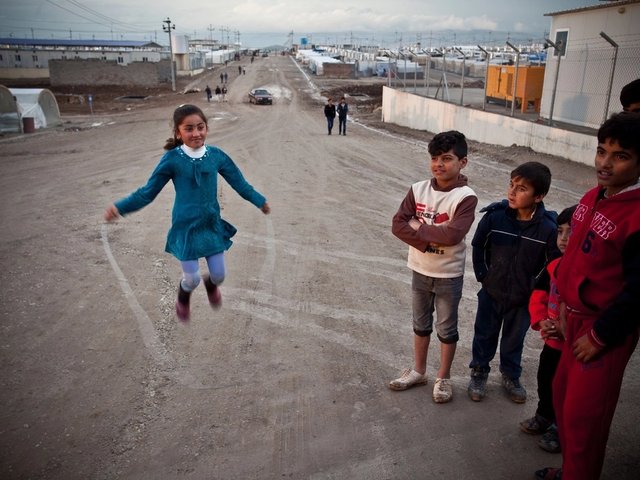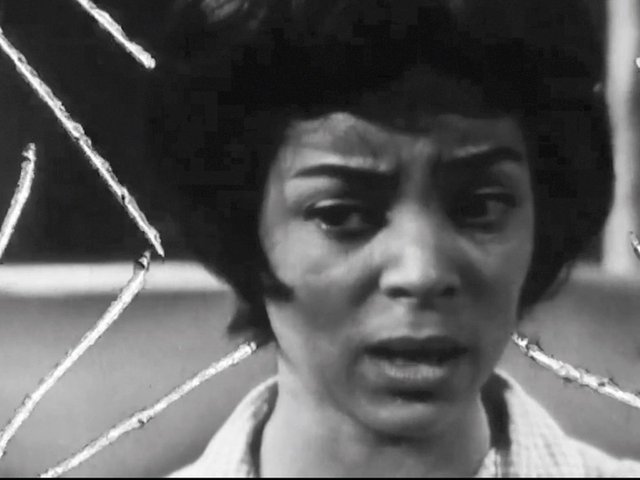In 1999, the Belgian artist Francis Alÿs made a short film titled Children’s Game #1: Caracoles. It traces a child’s attempts—casual, methodical, increasingly frustrated—to kick a half-full plastic bottle up a hill. The child contends with passing Volkswagen Beetles, behatted musicians on foot, antsy dogs, and the cracks and weeds that upset the concrete surface of the road. All the while, the bottle, failing to be a ball, changes directions on skittish whims until it slips right past the boy’s foot and he has to chase after it, all the way down the hill.
This four-minute drama set Alÿs on a decades-long journey to document children’s games from around the world. From musical chairs in Mexico and leapfrog in Iraq to snail racing in Belgium and knucklebones in Nepal, the result is a mesmerising archive of play as resistance. The work makes its UK debut this month in a gallery-spanning solo show at the Barbican Art Gallery in London.
I want to bring back the children to the centre of our attention
When Alÿs presented children’s games as the backbone of his Belgian pavilion show at the 2022 Venice Biennale, he described wanting “to bring back the children to the centre of our attention” after lockdown trapped us all in place. To his mind, le confinement, to use his even more appropriate French term, had seen children suffer even more than adults. But as the Barbican curation makes clear, this body of work has deep roots beyond being a reaction to the pandemic. According to the show’s curator Florence Ostende, it is in fact the one contribution Alÿs would hope to be remembered for.
In the main gallery space, Ostende says the children’s games films will be in dialogue with 25 of the small plein-air paintings that Alÿs has also been making since the 1990s (and which he unofficially calls the “family album”).
In a bid to not only document but also nurture play, the gallery is compiling a comprehensive public programme. Playrooms, including a shadow room, have been designed in concert with the long-time Alÿs collaborator Rafael Ortega, and a lecture and film series has been programmed.
During a session Alÿs undertook with local schools, one child asked him what his favourite film was. Ostende says his response—Abbas Kiarostami’s 1970 short film The Bread and Alley—was as surprising as it was instructive. “I understood a lot about his practice,” Ostende says. Kiarostami’s tale follows a little boy taking a big flatbread back home to his family. He has to walk down a narrow alley, where he meets a barking dog, who will not let him pass. Finally, the child gives the dog a bite to eat and then it will not leave his side. It is a tender, playful, microcosmic rendering of life’s daily struggles. And the simplicity of that condensed plot chimes not only with Children’s Game #1 but Alÿs’s entire oeuvre, from the man pushing a block of ice through a city’s streets (Paradox of Praxis 1, 1997) to the fox exploring empty museum corridors, looking for a way out (The Nightwatch, 2004).
Disappointed by the adults
Alÿs first started concertedly working with children in 2008, while making Don’t Cross the Bridge Before You Get to the River, a fictional bridge over the Strait of Gibraltar. This was a reprise of an idea he had in Cuba two years earlier, to create a visual dialogue between two shores on which the tragedy of contemporary economic migration plays out. But real-world politics meant the feuding countries in each context—Cuba and the US; Spain and Morocco—kept trying to co-opt the work. “I was disappointed by the response of the adults,” he said in an interview three years ago. Instead, he homed in on the intuition and freedom he saw at work in child’s play: the fantasy world young minds enter so willingly, wherein the rules remain unspoken until someone breaks one.
Alÿs has never shied away from the big problems of our times. That in itself chimes with the history of play. The UK’s adventure playgrounds were born, literally, in the rubble of the Second World War. Seven decades on, the housing and cost of living crises have pushed 300,000 more children in the UK—and countless more the world over—into absolute poverty and ever smaller spaces. Yet with nothing more than a stick or a stone, a child can conjure up a universe.
No ball, no crowd, but still passes and cheers
No work shows this more poignantly than Children’s Game #19: Haram Football. Shot in 2017 in Mosul, Iraq, it documents a group of young boys playing a football match between bomb craters and armoured tanks. They have no ball and there is no crowd. But the passes and cheers and collective euphoria are as real as the war—until gunshots see the children flee in an instant, their joy like smoke on the wind.
In highlighting this duality, Alÿs’s oeuvre acts as a kind of talisman, almost, a vital tool for resisting the many forces that sap our attention and creativity, our lifeblood. As Ostende puts it, it also allows for a crucial shift in point of view. This is not just a show that looks at how children operate in the world, it is also about children looking at us—the authors of the ills and restrictions imposed on their nascent lives.
• Francis Alÿs: Ricochets, Barbican Art Gallery, London, 27 June-1 September




